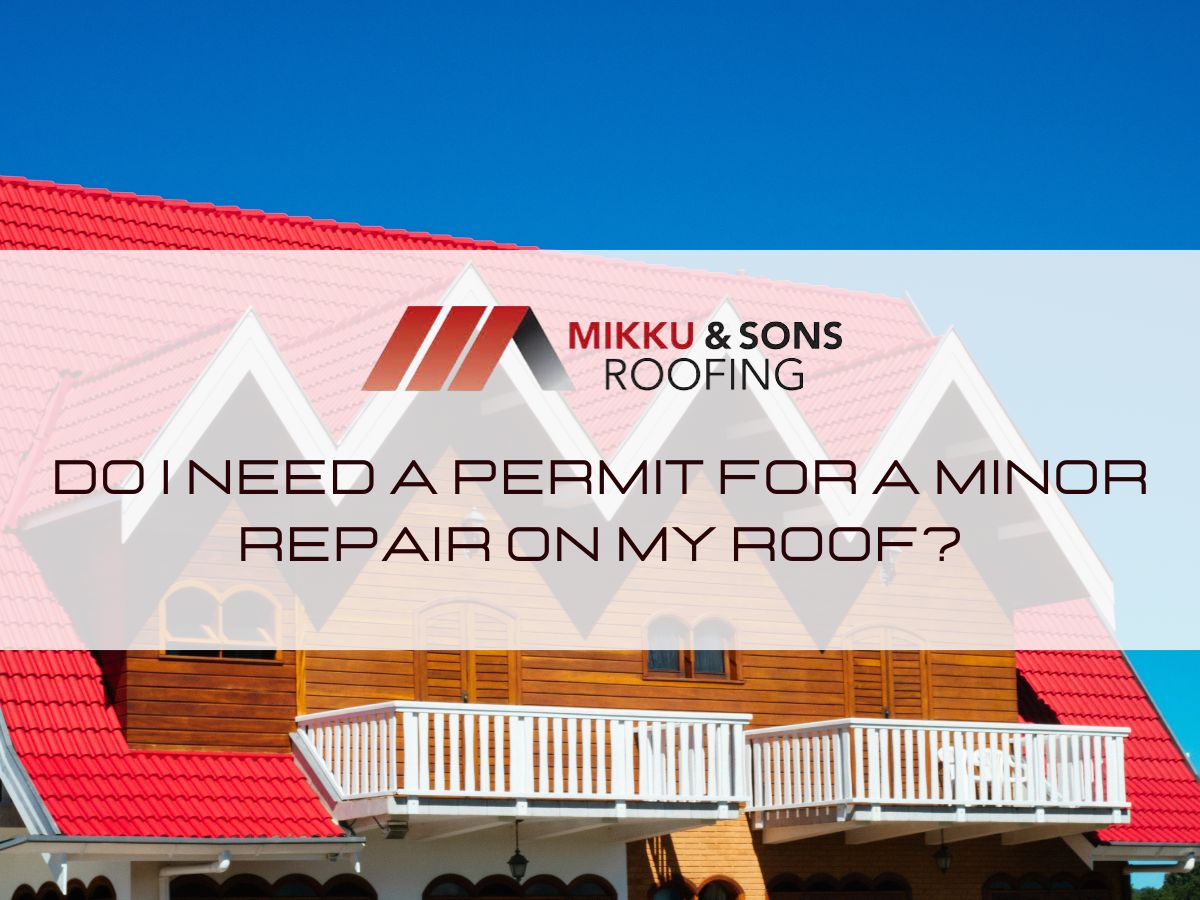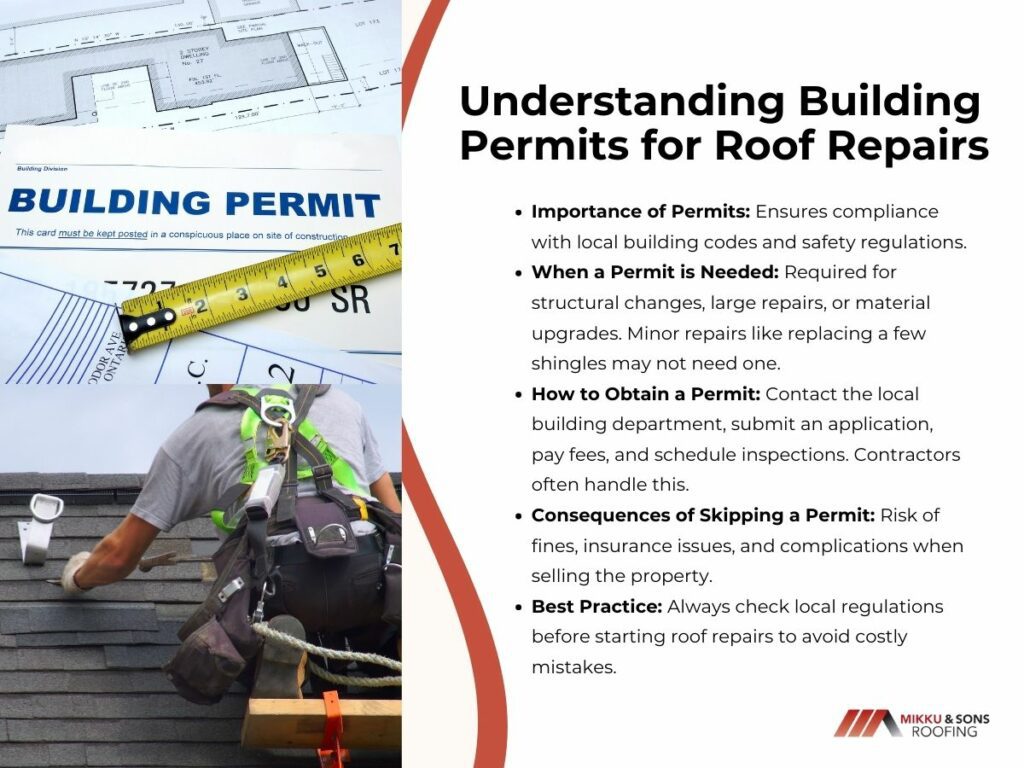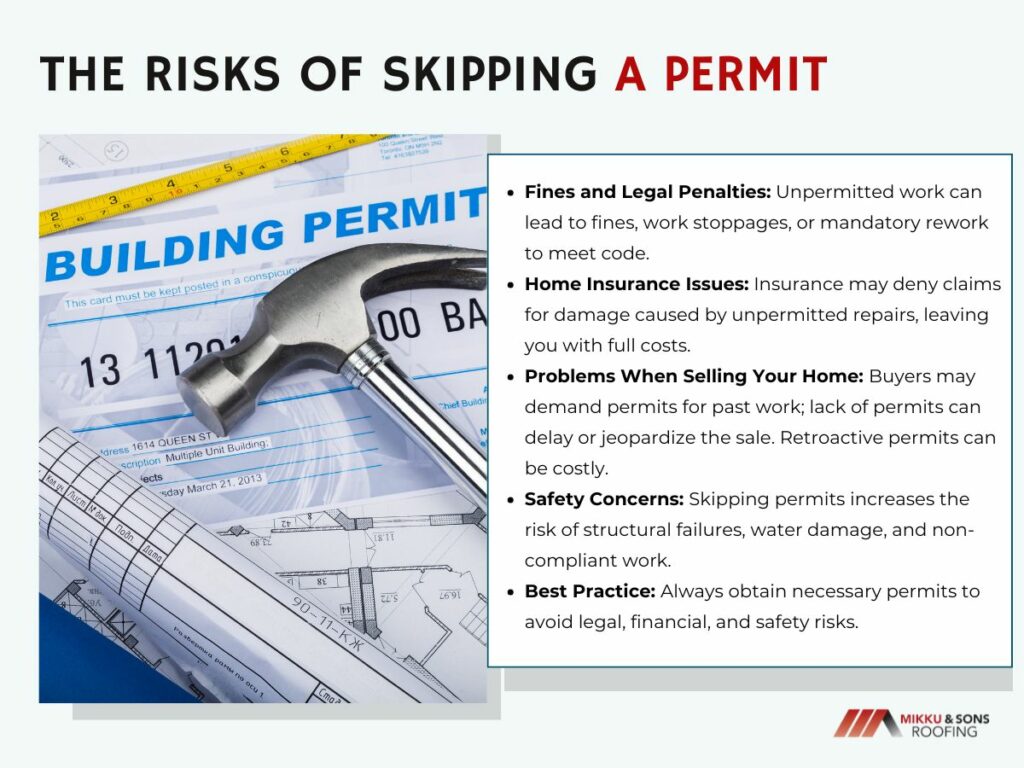
When it comes to roof repairs, one of the most overlooked aspects is whether a building permit is required. Many homeowners assume they can fix minor roofing issues without involving the local building department.
While that may be true for small repairs, some projects legally require a permit to ensure compliance with building codes and safety regulations. A permit for a minor roof repair depends on local regulations, the scope of the work, and the materials used.
Generally, small repairs like patching leaks or replacing a few shingles might not require a permit. However, it's essential to check with your local building department to ensure compliance with specific regional regulations. Let's look at whether to look for a Permit for a Minor Repair on your roof.
When planning a roof repair, it’s important to understand the role of building permits. Many homeowners and property owners may overlook this step, assuming that minor repairs don’t require permits. However, depending on your location and the extent of the work, obtaining the proper permits is often necessary to ensure compliance with local building codes.
Failing to secure a permit when required can lead to fines, delays, and even the need to redo the work. Building permits are put in place to regulate construction and ensure safety.
Roof repairs involve structural elements, which can impact the overall integrity of your home or building. Whether you’re replacing shingles, fixing a leak, or making more extensive repairs, knowing when a permit is needed can save you from costly mistakes.

Not all roof repairs require a permit, but there are certain situations where one is necessary. The need for a permit depends on the following:
Before starting any roofing project, it’s best to check with your local building department to determine if a permit is needed.
If a permit is required for your roof repair, the process is relatively straightforward:
If you hire a licensed contractor, they will often handle the permit process for you, ensuring that everything is completed correctly.
Skipping the permit process may seem like a way to save time and money, but it can lead to serious issues:
Not all roof repairs require a permit, especially if they are minor and do not affect the structural integrity of the roof. Generally, the following types of roof repairs can be performed without obtaining a permit:
Repairs that don’t compromise the roof’s overall structure often don’t require permits. These include:
Since these repairs involve minimal work and do not alter the underlying framework, they are often considered routine maintenance.
If a storm or strong winds have removed a handful of shingles, you can typically replace them without a permit. However, if the repair involves a large section of the roof or changing the material, a permit may be required.
Many local building departments allow homeowners to make small repairs—often under 100 to 200 square feet—without a permit. However, the exact square footage varies by location, so it’s always best to check with your municipality.
Cosmetic work, such as painting, cleaning, or applying a protective roof coating, does not require a permit. These tasks do not impact the roof’s integrity or alter the structure, making them exempt from permitting requirements.
General maintenance, such as cleaning gutters, removing moss or debris, and reapplying caulking, typically does not require a permit. These tasks help extend the lifespan of your roof but do not involve structural changes.
Although these repairs generally don’t require a permit, always verify with your local building department to ensure compliance with regional regulations. Different cities and states have varying rules, and what’s permissible in one area may require a permit in another.
While minor fixes may not need a permit, larger repairs or modifications almost always do. You will likely need a permit for:
Failure to obtain a permit when required can result in fines, delays, and even forced removal of completed work.
If your roofing project requires a permit, the process is usually straightforward but requires careful attention to detail.
Each city and county has its own set of building codes that determine when a permit is necessary. Before starting your project, check your local building department’s website or visit in person to understand the requirements.
Once you confirm a permit is needed, the next step is to complete the application process. This typically involves:
Some municipalities require a consultation or pre-approval before issuing a permit. This may involve meeting with an inspector or building official to review your plans and ensure they meet code requirements.
Permit approval times vary, ranging from a few days to several weeks, depending on the complexity of the project. Once approved, the permit must be displayed on-site for inspection purposes.
Most roofing permits require at least one inspection. An inspector may check:
Skipping inspections can result in penalties or requiring work to be redone, leading to increased costs and delays.
Skipping the permit process may seem like an easy way to save time and money, but it often leads to serious consequences.

If a building inspector discovers unpermitted work, you could face hefty fines or be forced to stop the project until a permit is obtained. Some municipalities may even require you to remove and redo the work to ensure compliance.
Many insurance companies do not cover damages caused by unpermitted work. If your roof suffers damage due to improper repairs, your claim may be denied, leaving you responsible for the full cost of repairs.
When selling a home, unpermitted work can create major issues during a buyer’s inspection. Buyers may request permits for previous repairs, and if none exist, it can delay or jeopardize the sale. In some cases, homeowners must obtain a retroactive permit, which can be costly and time-consuming.
Permits exist to ensure that roofing work is completed safely and according to code. Skipping this step increases the risk of structural failures, water damage, and other costly issues that could have been avoided with proper inspections.
If you're unsure whether your roof repair requires a permit, it's best to consult a professional. Architects, contractors, and roofing specialists have experience navigating local regulations and can help:
Hiring a licensed professional ensures your roofing project is done legally, safely, and without unnecessary delays.
Navigating Arizona's roofing permit requirements is crucial for any roofing project. Whether it's a full replacement, structural repair, or material change, a permit is often necessary to ensure compliance with local building codes. While minor repairs might not require a permit, consulting with your local building department is always a good idea.
Failing to obtain the necessary permit can lead to financial penalties, liability issues, and project shutdowns. Engaging with an experienced roofing contractor can help you navigate this process, ensuring your project adheres to all regulations and avoids potential pitfalls.
